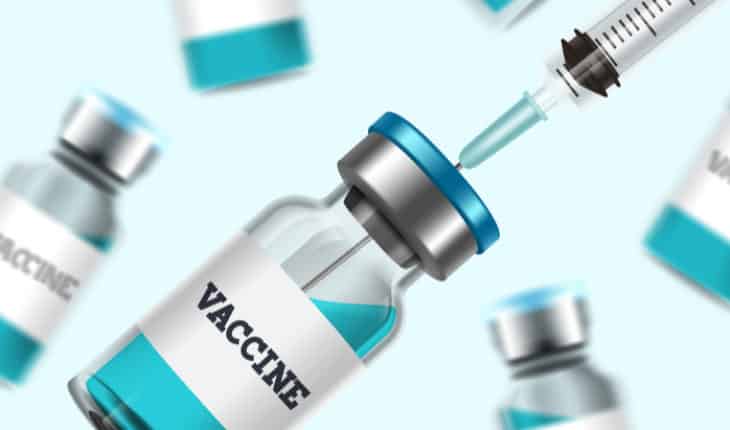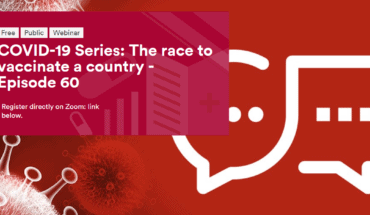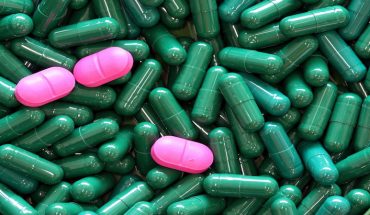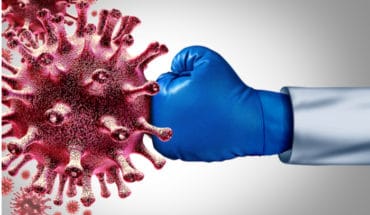Covid vaccines – all you need to know from Emma Hammett of First Aid for Life.
As a registered nurse in the midst of this crisis, I wanted to do my bit to help. The vaccination programme is critical to us emerging and rebuilding our lives and so I volunteered as a vaccinator.
The training we are offered as vaccinators is excellent and enables us to swiftly get up to speed with all the latest, vital vaccine information. This article condenses key information from reputable sources and will give you more information as to what to expect when you are offered your vaccine.
NHS and Public Health sources have been used to write this article. Using the Green Book Chapter 14a and the comprehensive training package produced for vaccinators.
Covid-19 the disease:
Viruses cannot reproduce by themselves. They contain instructions for how to copy themselves (within their mRNA) but they don’t have tools and supplies to do it alone. Therefore, in order to succeed viruses have to invade living cells (as their host) and once there, can replicate and go on to infect others.
The Coronavirus is tiny and its name results from the spike proteins that cover it – resembling a crown (corona in latin)
Coronaviruses use their spikes to penetrate living cells. When conditions are right, the virus can enter.
The ability of the virus to spread depends on various factors:
- How readily the virus can survive on surfaces
- How easily it transfers from one person to another
- Whether it can quickly replicate in the host environment
Consequently, to immediately help reduce the spread:
- Regularly clean touched surfaces
- Wash hands and use hand sanitiser
- Maintain social distance
When is the virus most contagious?
SARS-CoV-2 is primarily transmitted by person to person spread through respiratory aerosols (from speaking, coughing and sneezing) and direct human contact. It can also be caught by touching contaminated surfaces and transmitting this to a human contact.
After the initial exposure, people typically develop symptoms within 5-6 days (incubation period). However, about 20% of patients remain asymptomatic throughout infection.
Polymerase chain reaction (PCR) tests can detect viral SARS-CoV-2 RNA in the upper respiratory tract around 17 days.
It seems the virus is most contagious in the first week of illness, as well as in the 1 or 2 days prior to the development of symptoms.
People who don’t show symptoms are thought to be less infection than those who do experience symptoms
Symptoms
Most commonly reported symptoms are cough and fever.
Many people complain of headache, loss of smell, nasal obstruction (blocked nose), lethargy, myalgia (aching muscles), rhinorrhea (runny nose), taste dysfunction, sore throat, diarrhoea, vomiting and confusion.
Not everyone reports having a fever.
20% of the population do not appear to experience any symptoms at all.
For some people, the disease can prove fatal.
Who is most at risk?
Older people are more at risk of being more seriously ill or dying from Covid.
Comorbidities including diabetes, cancer and severe asthma are also more at risk
What about children?
Fewer than 5% of reported Covid cases have occurred in children. Generally, children appear to have mild symptoms. Most common symptoms are cough and fever, although they are more likely to have gastrointestinal symptoms too.
There have been very few children who have been seriously ill with Covid. They have experienced a multi-system inflammatory disease, similar to Kawasaki disease. However, this is extremely rare.
Children don’t seem to be major carriers or transmitters of the infection.
Pregnant women and neonates:
Recent evidence has shown that pregnant women experience similar levels of infection and symptoms to other adults, however they may need additional support in intensive care.
Severe infection in pregnancy was associated with increased maternal age, high body mass index, diabetes (prior to being pregnant) and long term high blood pressure.
Click here for an online Condensed Emergency First Aid at Word with Covid-19 updates
The Vaccines:
The pandemic led to governing and approving organisations working together to improve the speed of trials and release of data. This means that many of the different approving stages have been run concurrently or overlapped.
There have not been any short cuts, just an improvement in speed and efficiency. The safety of the vaccine remains of paramount importance and no stages in the approval or testing process have been skipped.
Scientists have looked at the full range of vaccine types available and development continues with a wide range of further candidates that will be launched once efficacy and safety have met all the required standards.
How the current vaccines work:
Most of the vaccines developed so far have focused on gaining immunisation using the spike protein. The virus uses this spike protein as its key to enable it to enter human cells.
The vaccines deliver components known as antigens made of inactive genetic material derived from the coronavirus. They then prime the immune system against infection for specific diseases.
Once the vaccine enters the body and delivers the antigen, the immune system recognises the antigens as ‘foreign’ to the body and respond to them by making antibodies and memory cells (T-cells)
When memory cells meet the antigen again (either as a natural infection or in a booster dose of vaccine), specific antibodies are produced even quicker and in greater numbers than during the first response. They therefore provide an early defence by preventing the organism from replication further and preventing disease from developing.
This response is similar to the response made to natural infection. However, there aren’t risks of the disease itself because there is not a live virus in the Covid-19 vaccines.
The first two vaccines launched in the UK both target the Spike (S) protein.
Neither vaccine is a live vaccine, so neither can give you Covid.
The Pfizer BioNTech vaccine uses mRNA:
mRNA vaccines use the pathogen’s genetic code as the basis of the vaccine. It contains the genetic sequence (mRNA) for the spike protein found on the surface of the coronavirus. This mRNA is wrapped in a lipid envelope to enable it to be transported into the cells in the body.
The genetic code is generated in vitro in the laboratory and does not contain any live derivatives of the virus. It is grown in lipid nanoparticles. This element of the synthetic mRNA will degrade within a few days, having triggered an immune response to Covid-19 in the recipient.
When the vaccine is injected into the body, the mRNA is taken up by the recipient’s cells. These translate the genetic information and produce spike proteins on their surface.
This stimulates the immune system to produce antibodies and activate T-cells which prepare the immune system to respond to any future exposure by binding to and disabling virus trying to enter the cells.
There is no whole or live virus involved. The vaccine cannot cause disease.
This vaccine is the first to have been released and has been tested in over 44,000 adults and is now widely in use worldwide.
The AstraZeneca COVID-19 vaccine uses an adenovirus vector.
The AstraZeneca vaccine is a viral vector vaccine that uses a weakened chimpanzee adenovirus as a carrier to deliver the SARS-CoC-2 antigen to the recipient. The adenovirus has been modified so that it cannot replicate (grow and multiply by making copies of itself) in human cells. It is therefore not possible for it to cause any disease. The vaccine has been made by inserting the genes that encode for the spike protein on the SARS-CoV2 virus into the adenovirus’s genetic code.
The adenovirus vector is grown in a human cell-line (HEK293). The ChAd is a non-enveloped virus, and the glycoprotein antigen is not present in the vector. The antigen is only revealed once the genetic code within the vector enters the target cells. The vector genes have been further modified to ensure it can’t reproduce itself, and to enhance the immune response.
When the vaccine is injected, it enters the hosts cells which then manufacture the spike protein. This then stimulates the immune system which reacts by producing antibodies and memory cells to the virus, without causing any disease.
Click here for an online Essential First Aid for All Ages
Why vaccines are important
Vaccination is the only way of quickly protecting the most vulnerable in our population. Therefore, vaccines are our quickest hope to return the world to some form of normality.
The Joint Committee on Vaccination and Immunisation (JCVI) has recommended that the NHS offer these vaccines to those at highest risk of catching the infection and of suffering serious complications if they catch the infection.
This includes older adults, frontline health and social care workers, care home residents and staff and those with certain clinical conditions. When more vaccines become available, the vaccines will be offered to other people at risk as soon as possible. A full list of the priority groups is published on the Government website and your GP can advise if you are eligible.
The safety profile of the vaccines is excellent. The most likely side effects are a sore arm, and possibly fever, headache and tiredness – all of which will resolve within around 48 hours.
Other side effects are extremely rare.
Who cannot have the vaccine?
The vaccines do not contain living organisms and so are safe for people with a weakened immune system. However, these people may not respond as well to the vaccine.
If you have severe allergies to a component of the vaccine it would be inadvisable to have it. You will be advised to have the Astra Zeneca vaccine if you have had a previous unexplained severe allergic reaction.
On the condition that you are pregnant, planning a pregnancy or breastfeeding, the vaccine is not contra-indicated. However, it is important that you read more detailed information in www.nhs.uk/covidvaccination and discuss your decision with your doctor.
How long it takes to be protected
For the Pfizer vaccine –
Short term protection starts from day 10 of the vaccination and between days 15 and 21 it is estimated to be at 89%
Published efficacy after one dose is at 52.4%
Two dose administration has been demonstrated to have an efficacy of 95%
For Astra-Zeneca’s vaccine –
Neutralising antibodies are induced at day 14 and 28 after the first vaccination. Specific T-cell responses are also induced after a single immunisation and were maintained by the second dose.
Neutralising antibody responses are seen 2 weeks after the booster dose. Peak T-cell responses are seen 14 days after the first dose.
High protection against hospitalisation was seen from 21 days after dose one. Therefore, it is thought that a single dose will protect against severe disease.
It appears that just one dose will still give around 73% protection against symptomatic disease.
Both vaccines require a second booster dose to gain the maximum immunity. In the UK, after the initial vaccine, most second doses will be given about 3 months later
Remember – no vaccine is 100% effective.
Vital to continue with infection control measures:
No vaccine is 100% effective and they all take time to build an immune response. Therefore, it is really important to
- continue with social distancing,
- wear a face mask,
- continue with vigilant hand hygiene and
- follow current guidance
What to expect when you attend your vaccination:
You will have received a phone call or letter from your GP requesting you attend. Tell your GP if there is a problem and you can’t attend
Please attend your appointment:
We are working to manage patient numbers to ensure social distancing. Vaccine doses must be used within the necessary time frame (usually within hours of being prepared). Therefore, a vaccine will potentially go to waste if you do not tell us/attend.
What to wear
You will usually be initially greeted outside (or in a well-ventilated area). Please wear layers so you are warm enough
We will be injecting into your upper arm – you can decide which one.
Please wear appropriate clothing to ensure we can easily access this area, without you needing to fully undress.
What we will need to know:
- If you have received a vaccine for anything else in the last 7 days (this is unlikely to exclude you from receiving the vaccine, but it is important to know)
- We will ask if you are well (minor non-covid symptoms will not preclude you from receiving the vaccine), we will also ask if you are experiencing fever, cough, loss of taste or smell at the moment.
- Whether you have ever had a severe allergic reaction – to any ingredients in the Covid-19 vaccine, any drug or any other vaccine?
- Have you had a previous unexplained anaphylaxis reaction? – If yes – the Astra Zeneca vaccine will be advised
- Could you be pregnant? – this is not a contra indication to you receiving the vaccine, but important to know.
- Are you taking warfarin or another anticoagulation (blood-thinning) medication or do you have a bleeding disorder? – If you are, you will need to bring your most recent blood clotting INR result so we can check it is okay.
- Have you taken part in a Covid-19 vaccine trial? – helpful for our records.
- Have you had a positive test for Covid-19 in the last month? – important for our records
What will happen
You will receive an information leaflet
Advice on possible side effects – pain/redness at the injection site, headache, fever and tiredness. Paracetamol can help with all of these
You will wait to be called in to have your vaccination.
The vaccination itself will only take a couple of minutes to administer.
The nurse or vaccine administrator, will check your name again, and ensure you don’t have any further questions and remind you of the possible side-effects.
They will also remind you which vaccine you are about to receive and will help you get comfortable, ask which arm you would like to be vaccinated in and give you the jab. They will hold cotton wool to the injection site for a few seconds following the injection, however, you are unlikely to need a plaster as most people do not bleed.
A small card or sticker will be given to you, which will have vaccine details
You will sit in the waiting area for 15 minutes before going home if you had the Pfizer vaccine. This is so we can keep an eye on you as very occasionally people can feel a bit light- headed immediately following this vaccine.
Your GP will get in touch to let you know when to attend your second vaccination. Please ensure you keep this appointment too. It will be in about 3 months time.
 It is not possible to catch Covid-19 from the vaccination
It is not possible to catch Covid-19 from the vaccination
However, it is possible that you may have caught Covid-19 prior to your vaccination or before you had built up your immune response. Therefore, it remains really important to stay vigilant and if you develop any possible Coivd-19 symptoms, to stay at home and arrange a test.
It will take time for the vaccination programme to make a tangible difference to the amount of disease in the population
It is vital to continue with infection control measures: social distancing, hand and respiratory hygiene and protect yourself, others and the NHS.
- What is a seizure? - 13th March 2025
- Febrile Convulsions and Seizures in Children - 13th March 2025
- Why women are less likely to receive CPR or survive cardiac arrest - 6th March 2025


 It is not possible to catch Covid-19 from the vaccination
It is not possible to catch Covid-19 from the vaccination




